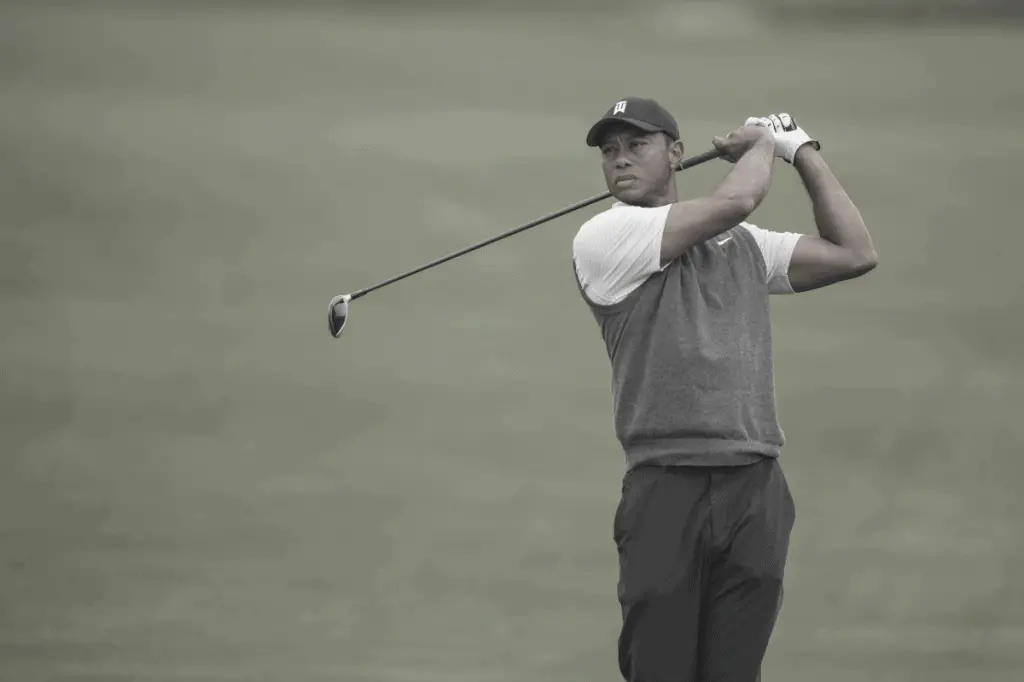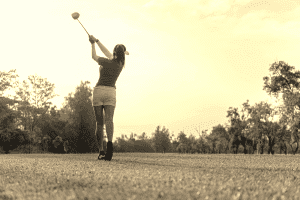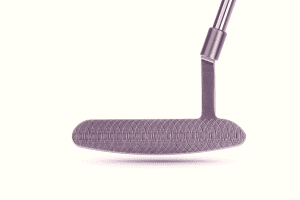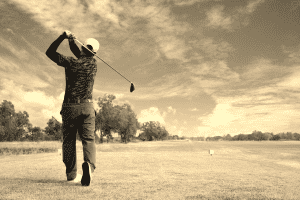The idea of getting new swing tips that will help your game is always an exciting prospect. Your next lesson could very well lead you to the breakthrough you’ve been looking for to hit more consistent shots with much tighter dispersion. That said, golf swing tips are most effective when they target a specific area of your game; for example, “swing faster” is a general tip that probably won’t produce great results for you.
In this guide, I’ve broken down the key areas of the golf swing and speak to why they are important, and offer a few helpful tips to work on in each key area. Check it out below!
Dissecting the Golf Swing
The King could not have been more right about the game of golf. The way you approach your golf swing will dictate how well you play the game. Knowing this, it’s important to understand how the swing breaks down, and understand the importance of each aspect of the swing.
Here are the key phases of the golf swing:
Setup and Address
For me, the setup and address is something I pay close attention to every time I step up to the ball. Having the right swing with the wrong setup will set you up for failure instantly. Poor setup will most likely cause your shots to become haywire and completely unpredictable.
Setup in its own right is relatively complicated, but the key elements are ball position, posture, alignment, and your stance. I’ll go into these in more detail later on with tips to perfect each element.
Takeaway
Doing the right things during the takeaway of your golf swing puts you in a position to deliver a powerful and accurate swing. The takeaway starts the moment you put your golf club in motion, and transitions into the backswing once it comes past the point where the club is parallel to the ground.
During the takeaway, it is critical to keep your club square. A good litmus check is to see if the golf shaft is pointed toward your intended target when the club is parallel to the ground.
Backswing
While the whole swing is important, a good backswing will set you up for success and help you to create power and speed in your swing. The backswing begins by transitioning out of the takeaway and concludes at the top of your golf swing.
During the backswing, there are a few points that require attention. First, it’s important to keep the lead arm straight (for right-handed golfers, this will be your left arm). Keeping your lead heel on the ground also promotes more consistency, unless a lack of flexibility prevents it. A third point is to keep your body still while transferring some weight to your back foot as you bring the club back; you do not want to sway your body during your backswing.
At the top of your backswing, your lead wrist should be flat, and the shaft of your golf club should be pointed towards your intended target.
Downswing
Once you leave the top of your backswing, you’ve initiated your downswing and are making your way to impact with the ball. While there are many ways to initiate the downswing, firing your hips first will help you keep your balance, add power to your swing and add more consistency to your game. If you frequently hit the ball too fat or too thin, this may be a good fix for that.
Impact
The MOI (moment of impact) is where the magic happens. At the moment of impact, you want to have your clubface square to your target to produce a straight shot. There are a couple of common issues at impact, where golfers either release the club at the wrong time or shift weight too early or late. These issues cause wild shots and create inconsistencies from shot to shot.
Follow-Through
Nearly without fail, where my belt buckle is pointed is right where my ball tends to go, for better or worse. The position you finish your swing in can tell you plenty about what occurred during the swing; if my body isn’t through the shot fully I can usually expect a miss to the right, while overturning my body usually results in a pull and a miss left. If you have followed through on your shot correctly, your hips should be pointed at the target, and you should have all your weight on your lead leg.
Actionable Golf Swing Tips: Steps Toward Game Improvement
With everything covered above, it’s obvious there’s a lot that goes into the golf swing. If you think about everything at once, you’re set up to fail. Instead, look at what you need to improve most. This will take some self-examination, whether you feel that an area of your swing needs help, or can see it through video of yourself.
Tips For Setup and Address
The way you set up to the golf ball can easily make or break your swing. If I start hitting wild shots, the very first things I check are my grip and my setup. This is a fundamental of the game that cannot be overlooked.
Check out our article on grip!
Ball Position
There are two schools of thought when it comes to having the right ball position in your stance: a progressive model, and keeping the ball in the same spot for each club. Where you put the ball in your stance will have a profound effect on how the golf ball travels. The position of the ball will have an impact on your trajectory, distance, and accuracy.
Our Tip: Keep the ball in the same spot for each club
Following this approach, the ball will stay forward in your stance with every shot you take, from wedge to driver. What you change here is the width of your stance; shorter irons allow for a much more narrow stance, while long irons and woods would have you widen your stance for more stability. If you struggle with consistency, this could be a great approach for your game.
This is a great video detailing this approach:
Posture
Another huge factor in your setup is the posture you have at address. When you look at most players on the PGA Tour, their posture is relatively consistent; it just looks good. Many amateurs can improve their posture which will help shape their swings well and make great contact. The right posture puts you in an athletic position.
Our Posture Tips:
- Start by standing tall, and bend your knees slightly from your hips
- Bend over, keeping your back flat and not hunched or flexed. Your pelvis should be tilted outwards as if you are sitting on a high bar stool.
- Pay attention to the way your weight is distributed. You should have most of your weight sitting in the balls of your feet
- For your upper body, your lead shoulder should be tilted just a bit higher than your back shoulder
- Hang your arms down from this set position. Where your arms fall naturally is where you should be holding the club in relation to your body.
Check out this video for a visual on this concept:
Alignment
The concept of alignment is simple, however, in practice, it is critical to success when you’re on the golf course. If your body and your golf club aren’t lined up correctly, even a perfect shot will miss the target by heading left or right of the target.
Our Tips for Alignment:
- Stand directly behind the ball, about 5 or 6 feet away so you can clearly see your intended target in front of you.
- Pick a closer target that is immediately in front of you that is on the same line as your intended target.
- Now walk up to your shot and align the clubface to the close-range target.
- To set your feet, you need to create an imaginary line that is parallel to the target for your feet to be on. While on the range, you can do this with alignment sticks and make it easier on yourself.
Improving Your Takeaway
From when you start the club back, and until it reaches parallel to the ground is what we consider the takeaway of a golf swing.
Our Top Tips for a Perfect Takeaway:
- Start with great posture. This comes from the set up, mentioned above, but remains critical to start the club on the correct path.
- Keep your club shaft parallel to your toe line. To see how you’re doing with this, take the club back to parallel to the ground and stop. If your club is pointed either outward or inside, your takeaway is setting you up for a more erratic swing. If the club is on a parallel line to your toes, it should be pointing directly at the target.
- Check if the clubface is square. While your club shaft is in this position, you want to see that the toe of the club is pointing directly upward toward the sky. This indicates that the clubface is square.
Here’s a great video detailing tips for the perfect takeaway:
Working on The Backswing
There’s a saying in golf, to “swing your swing”. This is absolutely true, but there are certain fundamentals you need to keep intact, especially during your backswing. The backswing is where you see most of the variability in the swing, with some being extremely flat and some being completely vertical.
Our Tips for Your Backswing:
- Keep your left arm straight throughout the entire backswing. This is critical and promotes shot consistency.
- Maintain your athletic stance and allow your right knee to retain some flex rather than straighten.
- Hinge your wrists. This action should be done progressively, resulting in a fully cocked wrist at the top of your backswing.
- Rotate your hips during your backswing. This coils up the tension in your body, setting you up for a more powerful downswing. If you don’t rotate your hips properly, you risk a weak “all arms” swing. Opening your hips naturally rotates your shoulders.
- Maintain stability, and don’t sway during your swing. It’s easy to sway as you start your backswing, jerking your body backward and bringing yourself off balance; this will hurt your consistency.
- Transfer your weight to your back foot during the backswing. At address, your weight should be evenly distributed between each foot. Proper weight transfer at this stage will help build power in your backswing.
Create a Powerful Downswing
A great downswing will help you put power and shape into your shot. The key areas to focus on in your downswing will be the action of uncoiling, swing path, and weight transfer. The downswing will often dictate whether you hit a draw, fade, slice etc.
Our Tips for the Downswing:
- Start by rotating your hips. Your hips should initiate the downswing, with your shoulders and arms following; this creates a lag effect and should help you get through your swing powerfully. Your shoulders should be next to rotate, just after the start of your hips.
- Maintain a wrist hinge through your downswing. Your wrists should naturally unhinge towards the end of the swing, “releasing” the club. This is done to leverage more power as your swing progresses.
- Stay stable, and shift your weight. Keeping your hips in the same “box” without swaying keeps your swing consistent. Shifting your weight from your back foot to your front foot will help you unload power into impact.
- Swing with speed. You want your downswing to be faster than your backswing.
- Follow an inside-out swing path. This path will help you with a draw, or more neutral swing, and help fix any tendencies to slice, fade or push the ball.
While the concept of an inside-out swing path is pretty simple, getting the feel down can be challenging, especially if your swing is not naturally following the inside path.
Check out this video on the right feel for your downswing:
Generating Explosive Impact
The moment of impact is the only chance you have to dictate where the ball goes. The impact can be judged by the angle of the clubface (open, neutral or closed), the angle of attack (measured in degrees), and the speed of which the club hits the ball.
Here is a great visual depicting key points of impact:
Picture Perfect Follow-Through
The perfect follow-through is easy to visualize; think of the way someone like Rory Mcilroy or Tiger Woods looks at the end of their swing; their swing is fully finished, with weight fully on the front foot. The most important thing about the follow-through is to finish your swing fully, and accelerate through the ball.
The way you stand after your swing is finished can often tell you what happened during the swing; if your body is pointed to the right of the target, your ball probably ended up travelling in that direction. The follow through is all about completing your body rotation, and staying balanced.
Our Follow-Through Tips:
- Allow your hands to release naturally. Till this point and through impact, they should be somewhat hinged. A natural release will turn your hands over during the follow-through.
- Stay balanced through your follow-through. Your hips should finish rotating, with your belt buckle facing the intended target. You should be well balanced on your lead foot, holding about 90% of your body weight on this foot.
- Hold your posture. It’s important not to “stand up” too quickly; doing so can cause you to top the ball, or throw yourself off balance.
- Finish strong. Don’t quit your swing after you’ve hit the ball, but instead accelerate through the ball to finish the swing completely.
Rick Shiels does an excellent job giving you a visual explanation on a great follow-through, here:
Final Thoughts
The golf swing is extremely complex, and most golfers will spend their entire golfing career trying to improve and strive for excellence. It is not practical to think about all the tips mentioned above at once, that will never help you. Instead, break your swing down and understand where you’d like to improve most. Improve that aspect of your game, until what you’ve practiced becomes completely natural. From there, try and work on some other aspects of your game.
Good luck, and thanks for reading!









